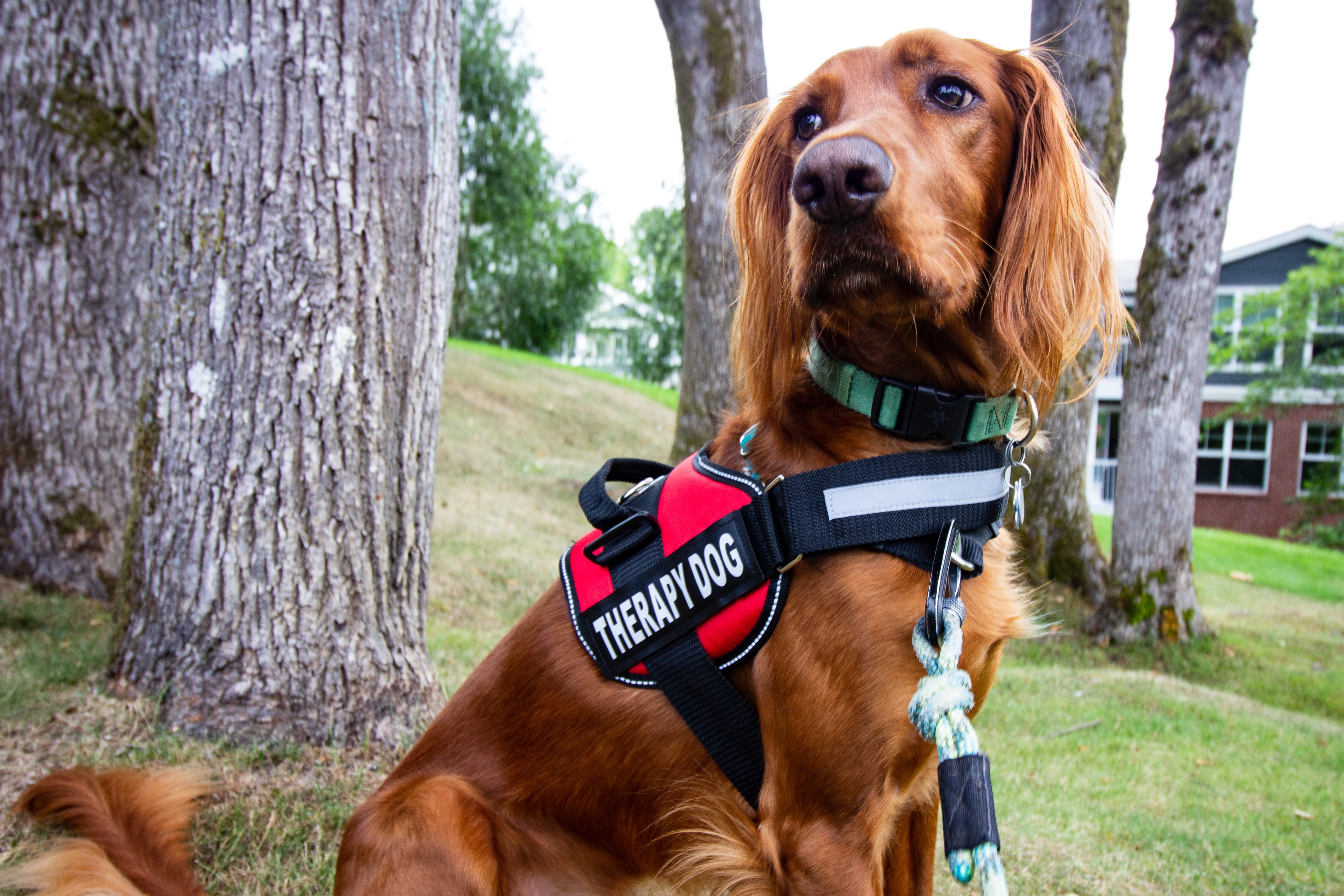What Are Service Dogs?
Our dogs are an important aspect of our lives. We care for them, and they care for us in return by working with us in various capacities and acting as faithful companions. Studies have shown that even being around dogs provides health benefits, like increasing fitness, lowering stress, and improving overall happiness, something any dog lover can attest to. Service dogs do all of these things and also perform specific tasks for individuals with disabilities. During the last decade, the use of service dogs has increased significantly, and so has the skills service dogs can provide. A service dog in the 1920s was a Seeing Eye Dog, and a Seeing Eye Dog meant a German Shepherd. Now, service dogs are come in different breeds and perform various tasks to help those with disabilities lead more independent lives.

Service dogs are trained to perform specific tasks that help a person with their disability. For example, hearing dogs help alert deaf and hard-of-hearing individuals to important sounds. Guide dogs help navigate the environments of blind and visually impaired individuals. Medical alert dogs can signal their humans to medical issues such as low blood sugar, a seizure, or alert their human to allergens’ presence. Mobility dogs assist people who use walking devices, wheelchairs, and those who have balance problems.
Psychiatric service dogs also assist individuals with disabilities, such as schizophrenia, post-traumatic stress disorder, obsessive-compulsive disorder, and various conditions. Some of the work performed by psychiatric service dogs includes entering a dark room and turning on a light to mitigate stress-inducing conditions, reminding a person to take medication, or interrupting repetitive behaviours.

Service dogs can come in many breeds and sizes, depending on the need they will be addressing. The dog must be able to effectively execute tasks necessary to lessen the effects of disability impairments. For example, a Papillon is not the dog one would need to pull a wheelchair. However, they could be exceptional hearing or medical alert dogs. Saint Bernards, Great Danes, and Bernese Mountain Dogs possess the height and strength to provide mobility assistance. Simultaneously, Poodles, which come in Toy, Miniature, and Standard varieties, are exceptionally versatile. A Toy Poodle can begin early scent training in preparation for alerting on blood sugar variations. In contrast, the larger Standard Poodle can learn to carry objects and activate light switches. The most common guide dog breeds are Golden Retrievers, Labrador Retrievers, and German Shepherds. However, regardless of breed, the best service dogs are usually handler-focused, desensitised to distractions, and highly trained to perform specific tasks reliably. They are not easily diverted from their duties at home or in public and remain attentive and responsive to their humans.

Although some service dogs may wear special harnesses, vests, tags, or collars, service dogs are not required to display identification according to the Americans with Disabilities Act (ADA). Many dogs that wear ID vests or tags specifically are not actual service dogs. Emotional support animals (ESAs), for example, provide comfort by being around a person. However, these dogs do not perform a specific job or task for a person with a disability, meaning under the ADA, they do not qualify as service dogs. The ADA has a clear distinction between emotional support animals and psychiatric service dogs. For example, a dog that has been trained to sense that a panic attack is oncoming and takes specific actions to help avoid or mitigate the effects of the attack would qualify. However, in the case of ESA’s, the dog’s presence provides comfort, which is not a task they are trained specifically to do. Therapy dogs provide opportunities for affection, petting, and interaction in various volunteer-based settings. Dogs bring delight and comfort to patients in hospitals, stressed travellers in airports, assisted living residents, college students during exams, and in many other situations. Therapy dogs are also used to comfort and relieve the stress of victims of traumatic events or disasters.
Dogs are wonderful companions that enrich the lives of their humans while improving their human’s overall health. It is important to remember that service dogs are much more than pets and much more than companions. The work they do is vital, and increases independence for children and adults with physical, developmental, and cognitive disabilities, and improves the everyday lives of thousands of people.
They truly are man(kind)'s best friend.

